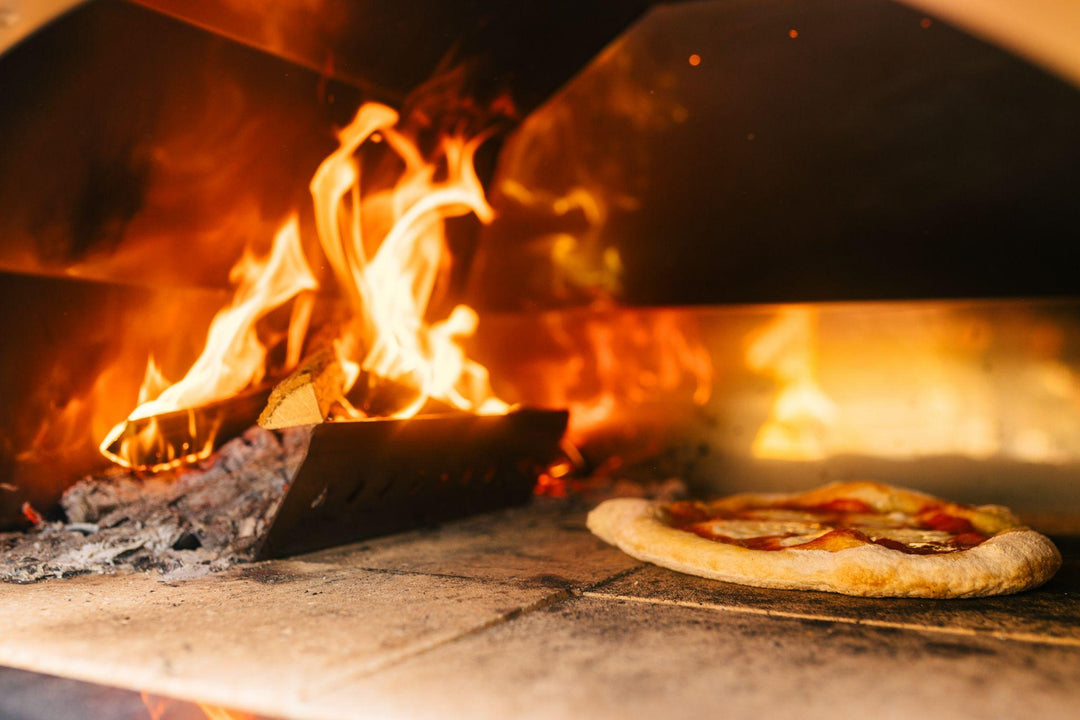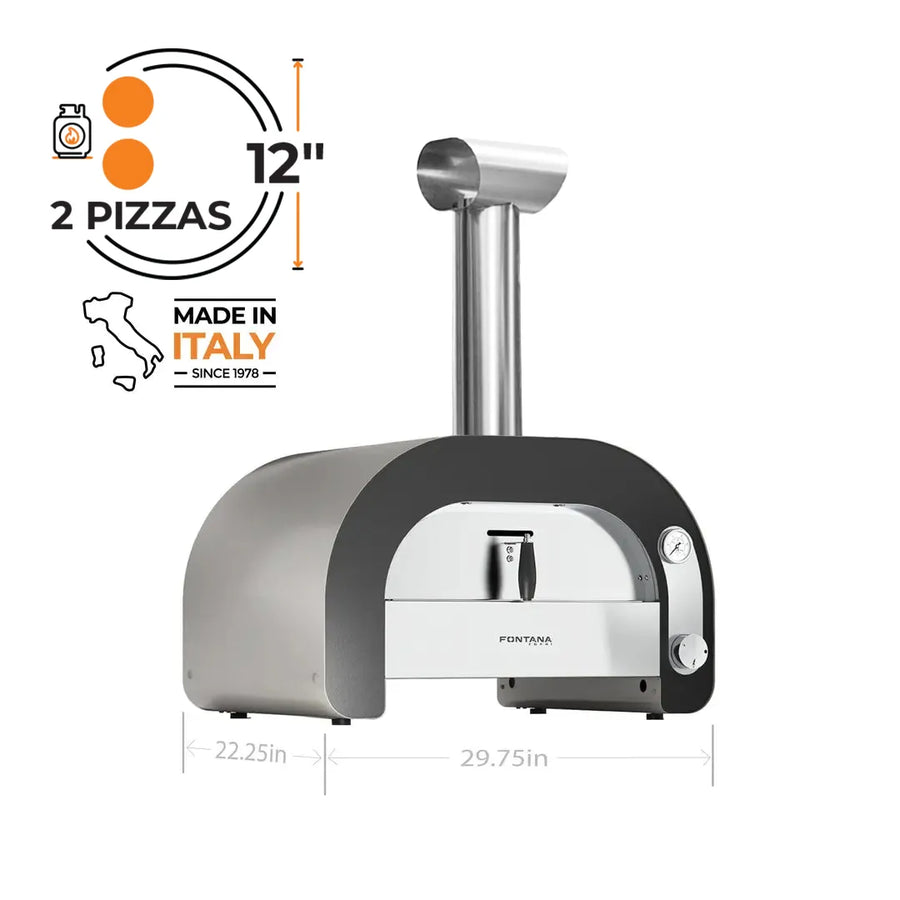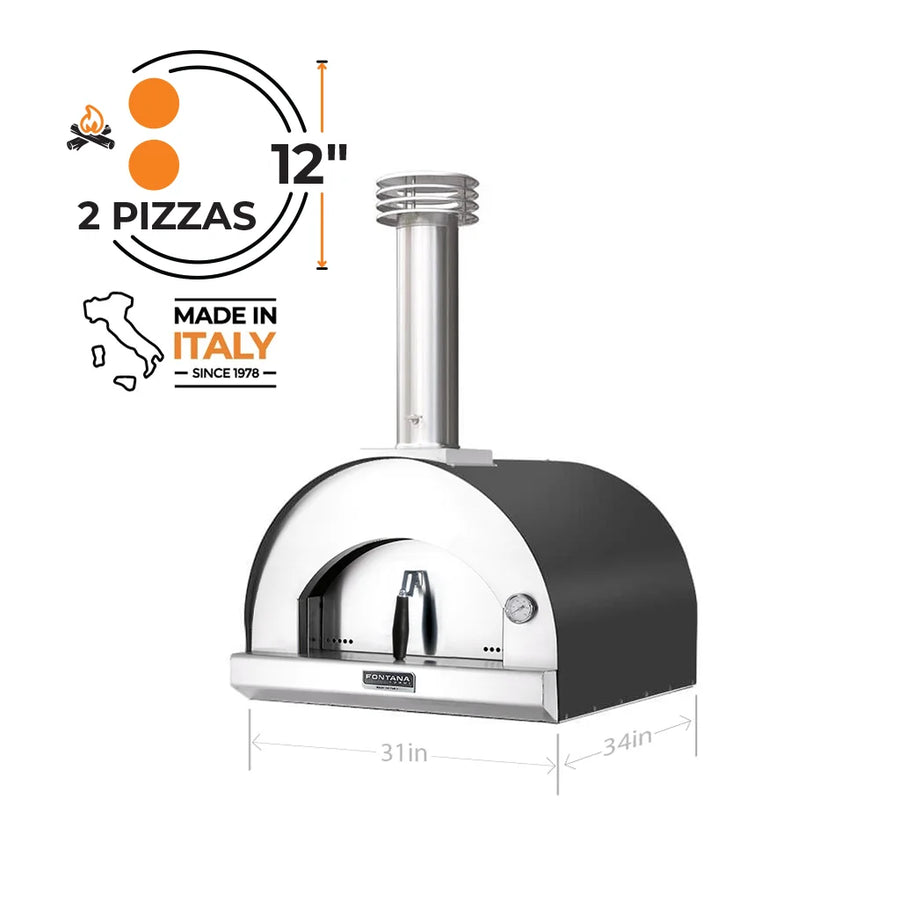Crème Caramel

Crème Caramel
Rated 5.0 stars by 1 users
Crème Caramel, also known as Flan, is probably one of the most luscious, classic desserts loved and served all around the world. Simple ingredients are necessary to create this delicate, creamy, velvety dish fit for a king. Perfect when prepared ahead of time, as it is even more delicious when fully cooled and served the following day. Let's get started!
You will need:
-
Firenze Hybrid Oven
-
8 small ramekins or a 9" fluted brioche mold
-
Deep dish pan
-
Infrared thermometer
- 150 grams sugar
- 1 teaspoon lemon juice
- 100 grams water
- 900 grams whole milk
- 100 grams heavy cream
- 150 grams sugar
- Pinch of salt
- 5 fresh eggs
- 1 egg yolk
- 1 teaspoon vanilla
- 2 strips of orange zest
Supplies
Ingredients
Caramel Sauce:
Flan:
Directions
Preheat the Firenze Oven to 350°F - 150°C. When lighting the gas oven, it is important to note that the door and damper must remain open. Once the fire is ignited, the door can be closed and the damper can be adjusted. For lower temperatures, as required in this specific recipe, make sure to turn the dial down to the lowest setting. If turned too low the flame may go out. Turning the damper on the chimney to a vertical position (completely open) also helps to control the internal temperature of the oven by letting some of the heat escape. Leaving the oven door ajar also helps to control the oven temperature.
For the caramel sauce, pour the sugar in the center of a saucepan. Avoid the sugar from touching the edge of the pan. Doing this will prevent the sugar from crystalizing. Place the pan on the stovetop over medium/high heat and pour the water and lemon juice over the sugar.
Avoid stirring or agitating the sugar before it begins to melt and slightly caramelize. Once it has turned a light amber color it is safe to stir.
Turn off the heat source and watch it closely, as it will change in color very quickly. When the sauce begins to gently smoke, it is time to turn the heat source off. Even if the caramel is not at the desired color at this point, it will still continue to darken. Allowing the caramel to become too dark will cause it to become very bitter. Be mindful that sugar is much hotter than boiling water, so handle with extreme care.
Immediately pour a small amount of the caramel in one ramekin at a time, being sure to coat the bottom as well as the sides by rotating the hot sugar. Once all coated, set the ramekins into a deep dish pan, and allow the caramel to completely cool and become hard.
For the custard, pour the milk, cream, a pinch of salt and half the sugar (75 grams) into a heavy saucepan. This is the time to add the orange zest. Bring to a simmer on medium/low heat. Turn off the heat source and allow the zest to be infused in the milk.
In a separate bowl, whisk the eggs, one egg yolk, vanilla and the remaining sugar until it becomes a creamy, pale yellow. Avoid incorporating too much air into the mixture. It is important to use very fresh eggs as they have a much milder flavor.
Strain the orange zest from the milk mixture.
Temper the eggs by adding two ladles of the hot milk while whisking constantly. Doing this will prevent the eggs from cooking, thus becoming like scrambled eggs. Make sure this is done by pouring a thin, slow stream of hot milk into the creamed eggs, while constantly whisking. Avoid incorporating too much air into the batter.
Once tempered, the rest of the milk can be incorporated.
Ladle the mixture into the ramekins through a fine mesh strainer until all are equally filled.
Carefully pour boiling water inside the pan until half way up the exterior of the ramekins, avoiding any water from getting inside the custard. The custard will essencially cook "a bagnomaria" - "double boiler" cooking method.
Before placing the pan inside the oven, check the internal temperature of the oven floor by pointing the infrared thermometer directly on the stone inside the oven. With great care place the tray into the oven, close the door and leave it slightly ajar. Bake for about 40 minutes.
If the custards begin to brown on the top, place a cookie sheet over the ramekins halfway through baking.
After 40 minutes gently shake the pan. If the batter ripples like water, it is necessary to leave it in the oven for an additional 5 minutes. Check again!
Move the pan once again, and if the Crème Caramel jiggles like set jello it is done and ready to come out of the oven. Poke a skewer or a knife in the center of the custard, as you would with a cake. If it comes out clean the Crème Caramel is ready.
Remove from the oven and allow the Crème Caramel to completely cool in the pan with the water. This should take about 1 hour.
Once completely cool, remove them from the pan, cover each with plastic wrap and place them in the refrigerator for at least 2-3 hours, or better yet overnight.
When serving the Crème Caramel, cut along the edge of the dessert with the help of a sharp, thin bladed knife. Set a dessert plate over the ramekin, and flip it over, as shown in the video. With a quick downward motion allow the Crème Caramel to slide off into the plate. Let all the thick caramel at the bottom of each ramekin drip over the top of each custard.
Very gently remove the ramekin, garnish with the toppings of your choosing and serve immediately. Enjoy!
Recipe Video
Recipe Note
Buon Appetito!
Subscribe to our YouTube channel for more videos!
Follow us on Instagram and tag us with your culinary magic! We would love to see how you make this recipe!





